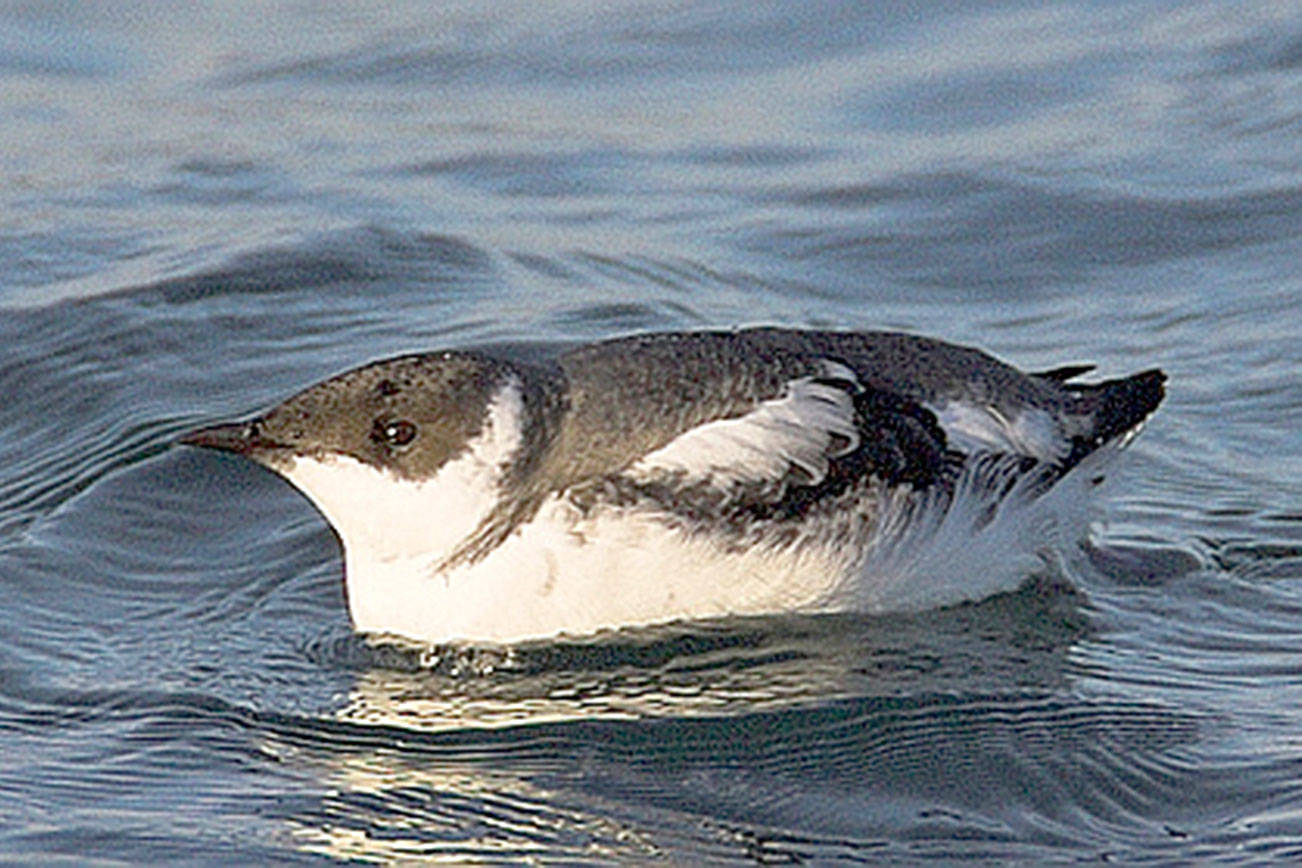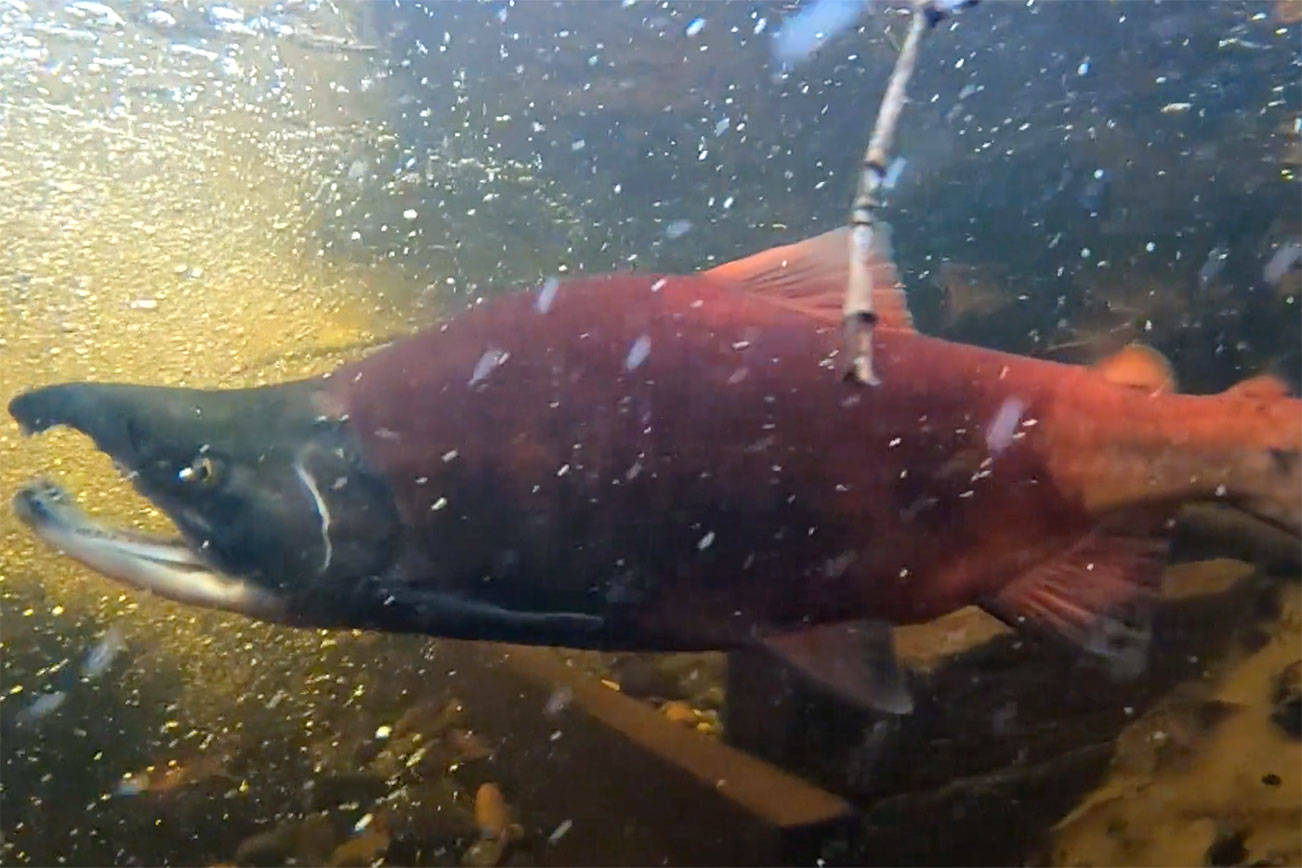A small, elusive sea bird has been at the heart of a sweeping habitat conservation plan in Washington, and after two decades, the state could have a comprehensive management plan for the marbled murrelet.
The seabird has long evaded researchers, with its first nest being found in the 197os. The murrelet spends most of its life at sea and returns to coastal land only to nest and breed in old-growth forests within 55 miles of marine water. Its habitat ranges from the Aleutian Islands down the Pacific coast to California. King County is included in its inland range.
When they do make their way inland, the birds need tall trees with thick branches that are only found in old-growth forests. In 1997, Washington state signed a federal agreement to protect the habitat of endangered species, and one of these species was the marbled murrelet. Interim rules were enacted, but these came with restrictions on timber harvests.
Timber in Washington state supports more than local economies. The state Department of Natural Resources (DNR) has trusts that help pay for services such as schools and firefighters across the state, and especially in rural counties. For many in economically depressed, rural corners of Western Washington, the marbled murrelet is viewed as one of many reasons why the logging industry has been shrinking.
While there’s much more habitat for the birds elsewhere in the state, some habitat exists in King County. This includes areas around the Middle and North Forks of the Snoqualmie River, as well as areas around the Skykomish and Upper Cedar rivers, according to a King County habitat map. Even before 2008, several spottings were reported in woodlands east of North Bend.
The state DNR released a final environmental impact statement in late September that lays out several alternatives. The preferred alternative would protect existing habitat managed by the agency as well as an additional 37,000 acres. It would also open up other acreage across the state for timber harvest.
Not everyone is happy with the proposal with county officials in rural Lewis and Wahkiakum counties sounding off.
However, DNR commissioner Hilary Franz said she believes their preferred option strikes a balance between preserving habitat and fulfilling its fiduciary responsibility to fund trust accounts.
“We are now moving forward and taking action to invest in the success of the marbled murrelet while also ensuring revenue for our schools and counties,” she said.
The DNR manages around 700,000 acres of forest land for county beneficiaries. Most counties receive some funding, but this funding is more significant for rural counties and junior taxing districts. In King County, some state-managed forestland exists near North Bend as well as to the east of Black Diamond near the Cedar River watershed. Some 10,000 acres of state trust land in King County are managed by the DNR. Under the proposed alternative, there would be no new acreage opened up to harvest.
“In many cases, especially in rural counties, these revenues go directly to rural county services that are important to those populations, and so we really spent a good amount of time making sure we don’t disproportionately impact those,” said DNR’s Forest Resources Division manager Andrew Hayes.
Hayes said the state undertook significant research to understand the marbled murrelet, and while they’ve been researching it for two decades, there’s still much left unknown about the species.
The DNR partnered with federal Forest Service researchers and experts from across the West Coast in the mid-2000s to study the birds. Much foundational research was conducted, including nesting needs and range. This was incorporated into the final environmental impact statement.
“We want to make sure people understand that this strategy is based on the best available science,” Hayes said. “We think it’s a good, science-based proposal.”
The plan will now be submitted to the U.S. Department of Fish and Wildlife for approval. If accepted, the board of the state DNR could approve it by year’s end.








